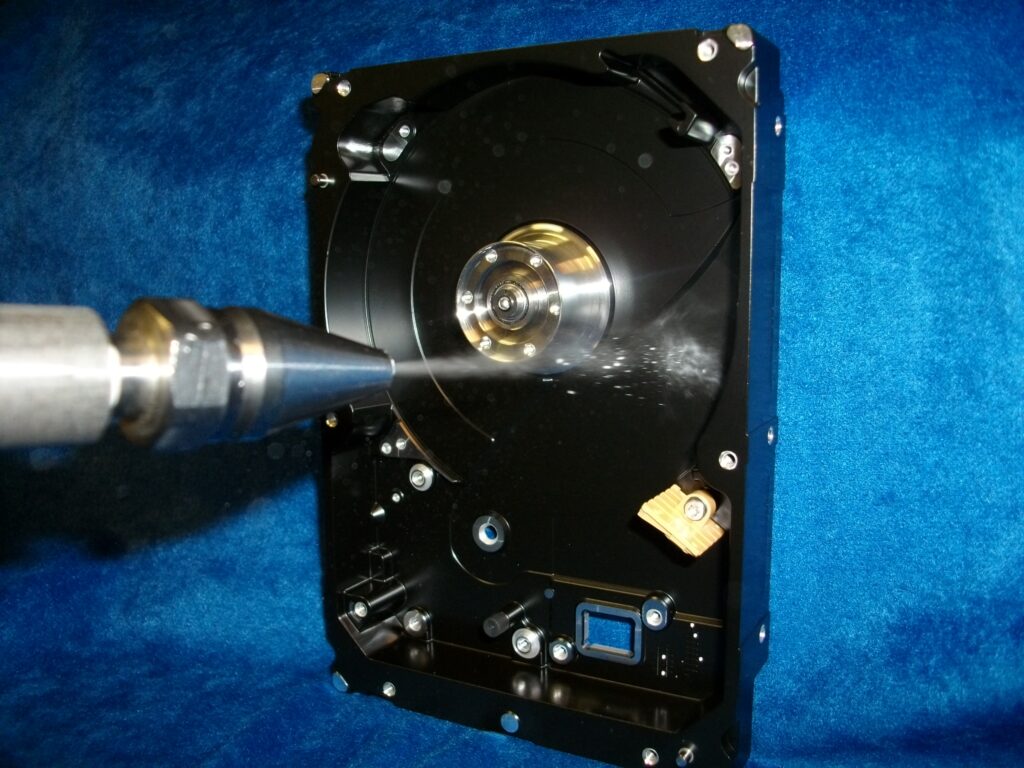CO2 Spray Cleaning for Removing Particles from Surfaces
Particle Removal Features:
- Non-condensing CO2 spray removes particles from surfaces
- Cleans particles down to 0.3 micron size
- Non-abrasive to the surface cleaned
- No-touch and selective cleaning
- Manual or automated solutions
- No residue left behind on part
CO2 spray cleaning is a highly effective particle removal technology that is commonly used in a wide range of industries including optics, surface preparation, electronics, Hard Disk Drives and more.
CO2 cleaning technology is a non-abrasive, waterless, and no-touch solution that effectively removes a wide range of particulate matter, including submicron particles.
How it works?
CO2 snow cleaning uses a spray of solid particles of carbon dioxide, or dry ice, mixed with a heated and pressure-regulated inert propellant gas. Solid CO2 particles impact the substrate at high velocities to produce a high shear stress on surface contaminants. This action creates a chemically active solid phase, providing efficient and effective removal of particulate matter, inorganic residues, and organic thin film contamination. After removing the contamination from the surface, the CO2 particles sublime, leaving no trace. Depending upon the nozzle assembly, spray settings, propellant pressure, and temperature, the cleaning energy delivered to the substrate is completely adjustable.
Important precision cleaning process benefits:
- Penetrates the “boundary layer”, delivering cleaning to the substrate.
- Spray generates a substantial turbulent flow regime to increase local sheer stress.
- Low “hardness” of CO2 particles yields a non-abrasive cleaning process.
- Designed to remove soft, sub-micron, sticky, and large particles from substrate.
- Process variables can by tuned by various nozzles, pressures, temperatures, and flow rates.
- Impact surface stress values ranging from 1 MPa to 80 MPa can be easily controlled for optimum cleaning effect.
- Thin organic surface layers can be effectively removed.
- Easily adapted to automated in-line or island cleaning systems, and in-tool cleaning applications.

